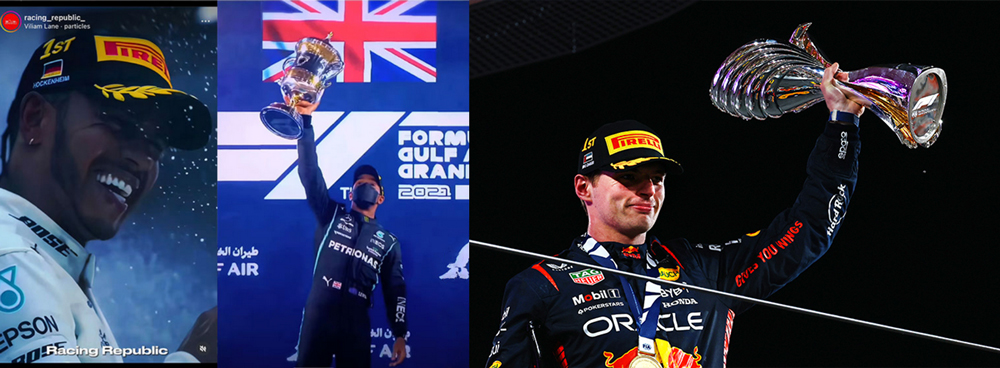Can an F1 Race Be Cancelled Due to Rain?
Can F1 Races Be Cancelled Due to Rain? When the Storm Wins the Race
Short answer: Yes—but it’s rare. Formula 1 will race in the wet, delay in heavy rain, and only abandon a Grand Prix when safety or the regulations leave no other option. The sport has a deep history of epic wet-weather drives, but modern F1 is just as defined by strict safety standards: visibility, aquaplaning risk, medical access, and time limits.
Rain doesn’t cancel F1. It dares it. Wets go on, visors drop, and the grid leans into the storm—until spray turns into a white wall and aquaplaning makes heroes passengers. That’s when Race Control delays, red-flags, or, in rare cases, calls it off. Remember Spa 2021: hours of downpour, laps behind the Safety Car, then over. Under today’s rules, no green‑flag laps means no points; partial distance earns partial points. So can an F1 race be cancelled due to rain? Yes—but only when visibility and safety fall off the cliff. Until then, rain isn’t an excuse. It’s the wildcard.
Here’s how it really works.
Why F1 usually races in the rain
- Wet-weather tires: Pirelli supplies intermediates and full wets. Full wets can disperse around 80–85 liters of water per second at high speed; intermediates handle lighter rain or a drying line.
- Car systems and rules: Rain lights, traction control bans (still no TC), sophisticated aerodynamics, and the Safety Car/Virtual Safety Car are all part of the equation. The Race Director can declare a “Wet Race,” alter start procedures, and require rolling starts behind the Safety Car.
- The drivers: F1’s best often shine in mixed conditions. Some of the sport’s most memorable races—Canada 2011, Brazil 2016, Turkey 2020—happened because F1 does push to race in the wet when it’s safe.
What actually stops a race in the rain
Wet racing is fine. What isn’t is when these three things tip over a safety threshold:
1. Visibility, not just grip
- Spray from modern cars is enormous, especially at speed. In heavy rain, drivers can’t see braking points—or the car directly ahead.
- Visibility is the single biggest limiter in recent years. Even if the tire can cut through water, drivers can’t race what they can’t see.
2. Aquaplaning and standing water
- Rivers across the track, poor drainage at certain corners, or sheets of water cause aquaplaning at high speed—essentially turning the tire into a waterski.
- If multiple cars are losing control in a straight line or there’s persistent standing water, Race Control will suspend running.
3. Medical access and logistics
- If the medical helicopter can’t fly to the designated hospital due to low cloud or storms, sessions can’t go ahead—even if the track itself is driveable.
- In extreme cases, flooding can compromise fan, staff, and team safety around the venue. The 2023 Emilia Romagna GP was cancelled due to regional flooding, not track rainfall during the event.
Who decides—and how
- The FIA Race Director, working with the Clerk of the Course and the FIA Safety and Medical Delegates, makes the call. They’re informed by track inspections, onboard camera checks, radar, feedback from safety car and medical car laps, and drivers’ reports.
Options before cancellation:
- Delay the start or qualifying session.
- Start behind the Safety Car and switch to a rolling start.
- Use the Safety Car or Virtual Safety Car during heavy showers.
- Show a red flag to suspend the race until conditions improve.
The rules that set the limits
- Time limits: The maximum race duration is two hours of green-flag racing, and no more than three hours total including suspensions. If the clock runs out while you’re waiting for conditions to improve, that can end the event.
- Points for shortened races: After the 2021 Spa debacle, F1 overhauled the system. No points are awarded unless a minimum distance is completed under green-flag conditions (i.e., not solely behind the Safety Car). If the race is stopped early, points are scaled to the percentage of distance completed—partial points for short distances, full points if most of the race is done.
- Laps and starts: In very wet conditions, multiple formation or Safety Car laps can be used to assess conditions. If a standing start isn’t safe, Race Control can opt for a rolling start once visibility and grip meet the threshold.
When it really gets called off
“Cancelled due to rain” can mean different things:
- Before the event runs: If severe weather threatens safety around the venue or prevents medical evacuation, a session—or an entire day—can be cancelled or moved. Example: Suzuka 2019 postponed qualifying to Sunday due to a typhoon; Imola 2023 cancelled the entire GP weekend due to flooding.
- During the Grand Prix: If heavy rain persists and conditions don’t improve within the regulatory window, the race can be abandoned (red-flagged and not restarted). Classification and points then depend on how much green-flag running happened before the stoppage.
- The Spa 2021 reminder: That “race” ran only behind the Safety Car due to relentless rain and visibility issues. Points were awarded at the time. The rules have since been changed to prevent points for Safety Car-only “races.”
Why modern F1 is more cautious in the wet
- Post-2014 safety philosophy: After Jules Bianchi’s fatal Suzuka accident in wet, low-visibility conditions, the sport tightened procedures around recovery vehicles on track, speed deltas under double yellows, and when to deploy SC/VSC.
- Ground-effect spray: The 2022+ cars generate different wake patterns and heavy spray from the floor. The FIA has tested spray-reduction devices; so far, the visibility problem in very heavy rain remains unsolved.
- Night races and street circuits: Floodlights plus spray can create glare; street circuits can form streams across the track. Race Control tends to be conservative at places with limited runoff or marginal drainage.
Common scenarios you’ll see on a rainy Sunday
- Delayed start while the rain cell passes, then a rolling start on intermediates.
- Start behind the Safety Car on full wets; once conditions improve, the race goes green. Often teams swap to intermediates quickly as a dry line appears.
- Red flag when a downpour arrives mid-race, then a restart once rivers disappear and visibility returns.
- Time-limited finish if delays and suspensions chew through the three-hour window.
A few famous rain-affected precedents
- 1991 Australia (Adelaide): Torrential rain, race stopped early, half points awarded.
- 2009 Malaysia: Monsoon and fading daylight; red flag, half points.
- 2011 Canada: Safety Cars, a long red flag, then a late sprint—the longest GP in history under the old four-hour cap.
- 2016 Brazil: Multiple Safety Cars and two red flags; still finished under green.
- 2021 Belgium: Endless rain and zero visibility; only laps behind the Safety Car—now a catalyst for rule changes.
- 2022 Japan: Heavy rain, early red flag, later restart to a shortened timed finish.
Do full wet tires make racing in any rain possible?
No. Full wets clear a lot of water, but they can’t fix visibility or eliminate aquaplaning in standing water. In recent years, there’s also been a pattern: conditions unsafe for racing on full wets often remain so until it’s good enough for intermediates, which contributes to longer delays.
FAQs
Is there a hard rule for how much rain is “too much”?
No single number. Decisions hinge on aquaplaning risk, drainage, driver visibility, medical helicopter clearance, and forecast. The same rainfall can be safe at one track and unsafe at another.
Could a race be moved to Monday?
In theory, if logistics and regulations permit and the FIA, promoter, and stakeholders agree. In practice, F1’s calendar and freight schedules make Monday races extremely unlikely.
What happens to tickets if a race is cancelled?
That’s down to the event promoter’s terms and local consumer law. F1 and promoters handled Spa 2021 with goodwill gestures, but policies vary by venue.
So… can F1 be cancelled due to rain?
Yes—if the rain compromises visibility, aquaplaning, or medical access beyond the window where a safe restart is possible. Most of the time, F1 will wait it out, run behind the Safety Car, or shorten the race. But when the conditions don’t meet modern safety standards—and don’t improve in time—the show does stop.
The bottom line
F1 is built to race in the wet, and some of its greatest moments happen when the weather turns. But the sport draws a firm line at safety, shaped by hard lessons and modern regulations. When the rain crosses that line—and stays there—F1 will abandon the race. It’s rare, but it’s the right call.
Up Next



